Peptide labeling and modification Trigoats Provide modification and labeling of hundreds of polypeptides, and ask sales staff for details
|
FITC
|
Rhodamine B
|
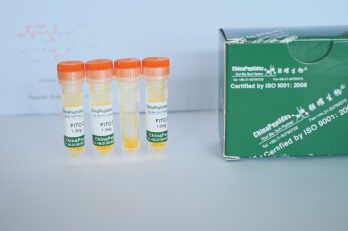
|
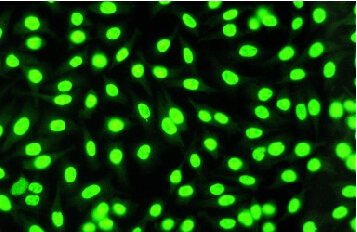
|
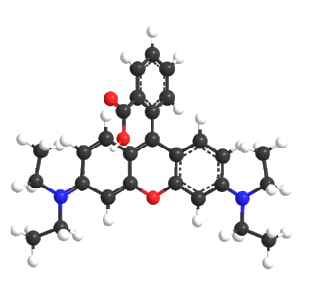
|
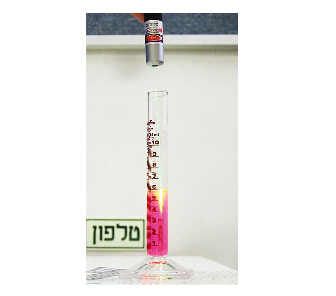
|
|
FITC Conjugated Peptides
|
FITC-Peptides Under Microscopy
|
Rhodamine in 3d model
|
Rhodamine B in solution
|
So far, it has a lot of content of peptide labeling and modification. It has been widely used in peptide medicine, peptide biology, peptide antibody and peptide reagent research.Non radionuclide labeling (C13, H2, N15), fluorescence labeling (FAM, FITC, etc.), biotin labeling, phosphorylation and modification are all commonly used peptide labeling and modification.
1. Non radionuclide labeling
At present, C13 and H2 are still widely used in non radionuclide labeling because of their safety and low radioactivity.Now there are relatively complete non radioactive labeled amino acids, which can be directly linked to the peptide according to the normal peptide synthesis method.
2. Fluorescent labeling
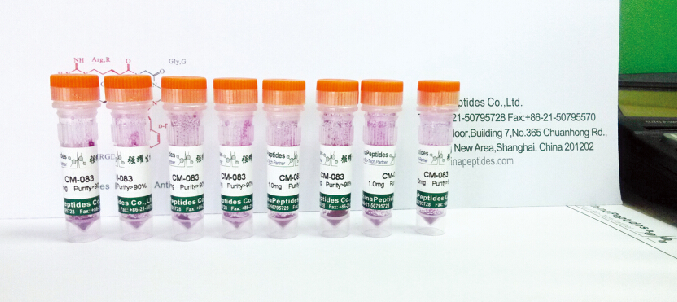
The compounds on which fluorescent labeling depends are called fluorescent substances.Fluorescent substance refers to the compound with the chemical structure of conjugated double bond system. When it is irradiated by ultraviolet or blue violet light, it can be excited into excited state. When it is restored from excited state to ground state, it will emit fluorescence.Fluorescent labeling technology refers to the use of covalent binding or physical adsorption of fluorescent substances on a group of molecules to be studied, and the use of its fluorescence characteristics to provide the information of the subject.
Because there is no radioactivity in fluorescent labeling, the experimental operation is simple.Therefore, at present, fluorescent labeling is widely used in biological research. The fluorescent labeling method is related to the structure of fluorescent reagent. For the method with free carboxyl group, the same as the reaction with peptide, the HBTU / HOBt / diea method is also used to connect.
The peptide labeled FITC at the N-terminal needs to undergo cyclization to form fluorescein, usually accompanied by the removal of the last amino acid, but this can be avoided when there is a spacer such as aminocaproic acid, or when the target peptide is cut off from the resin through non acid environment.Trigoats has a variety of mature fluorescent labeling peptide technology and excellent purification process.
3. Biotin labeling
3.In the late 1970s, biotin-avidin system (BAS) was applied in immunology and developed rapidly, becoming a new type of biological reaction amplification system. Because it has high affinity between biotin and avidin and multistage amplification effect, and can be organically combined with immunolabeling techniques such as fluorescein, enzyme and isotope, the specificity and sensitivity of various tracer immunoassay are further improved. Biotin N- hydroxysuccinimide ester (BNHS) and biotin p-nitrophenol ester (pBNP), which are mainly used for labeling polypeptide amino groups, are relatively commonly used BNHS. Of course, biotin labeling can also be directly used, because it has a free carboxyl group on its structure, so HBTU/HOBT/DIEA method is adopted in condensation. Due to the low solubility of biotin, mixed solvent of DMSO/DMF can be used to increase the solubility.
4. Phosphopeptide synthesis
Phosphopeptides play an important role in the process of life, such as DNA damage repair, transcription regulation, signal transduction, apoptosis regulation, etc.Phosphorylated polypeptide mainly refers to the modification of side chain hydroxyl groups of Ser, Thr and Tyr residues in peptide chain into acid phosphate polypeptide.Up to now, the phosphorylation modification of polypeptides mainly includes post-phosphorylation method and monomer method. Post-phosphorylation method is to phosphorylate the side chain hydroxyl groups of Ser, Tyr or Thr after the polypeptide sequence is synthesized on resin. Monomer rule is to directly introduce appropriately protected phosphorylated amino acids into polypeptide sequences. This method is simpler than the later phosphorylation method, and has become the main method of polypeptide phosphorylation modification.
When modified by monomer method, phosphorylated amino acids are difficult to condense with peptide chains due to steric hindrance generated by larger groups modified by side chains, and subsequent amino acid introduction is relatively difficult, especially when modified with multiple phosphorylation sites, synthesis becomes extremely difficult, and the final product is complex in composition, difficult to separate, and extremely low in yield. Therefore, when phosphorylating multiple sites in the peptide chain, a post-phosphorylation method can be considered. The synthesis process is mainly to selectively remove the side chain protecting group of the amino acid to be labeled after the synthesis of the polypeptide is finished. For Tyr, Thr can be directly reacted with amino acid not protected by the side chain, while Ser can be quantitatively removed by Fmoc-Ser(trt) under the condition of 1% TFA/DCM. After phosphorylation, bis-benzylidene phosphoramidite and tetrazole are adopted to generate a phosphoramidite tetrazole active intermediate, which is connected to a hydroxyl group, and then oxidized under peroxyacid to generate phosphoryl to complete the reaction.